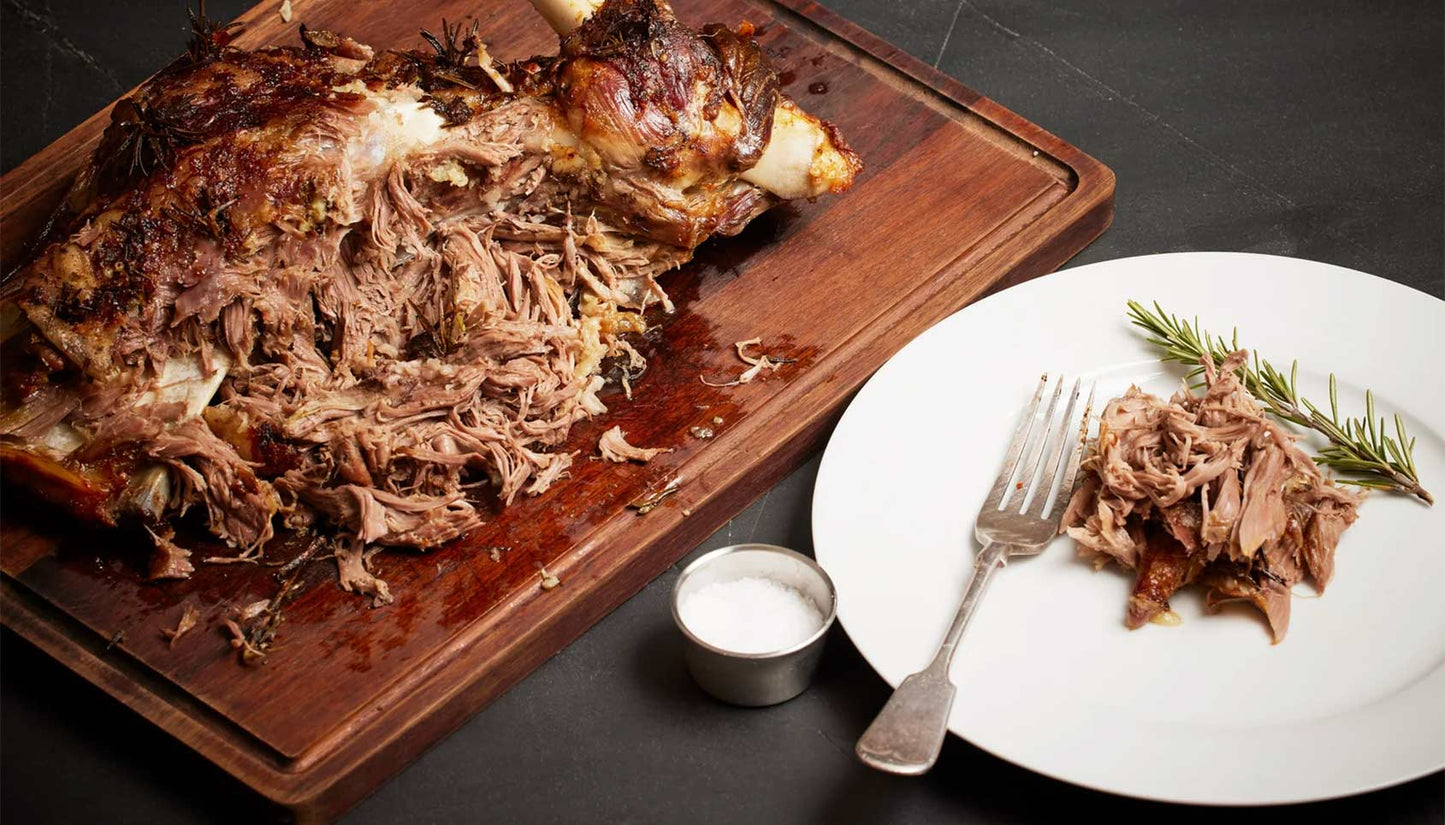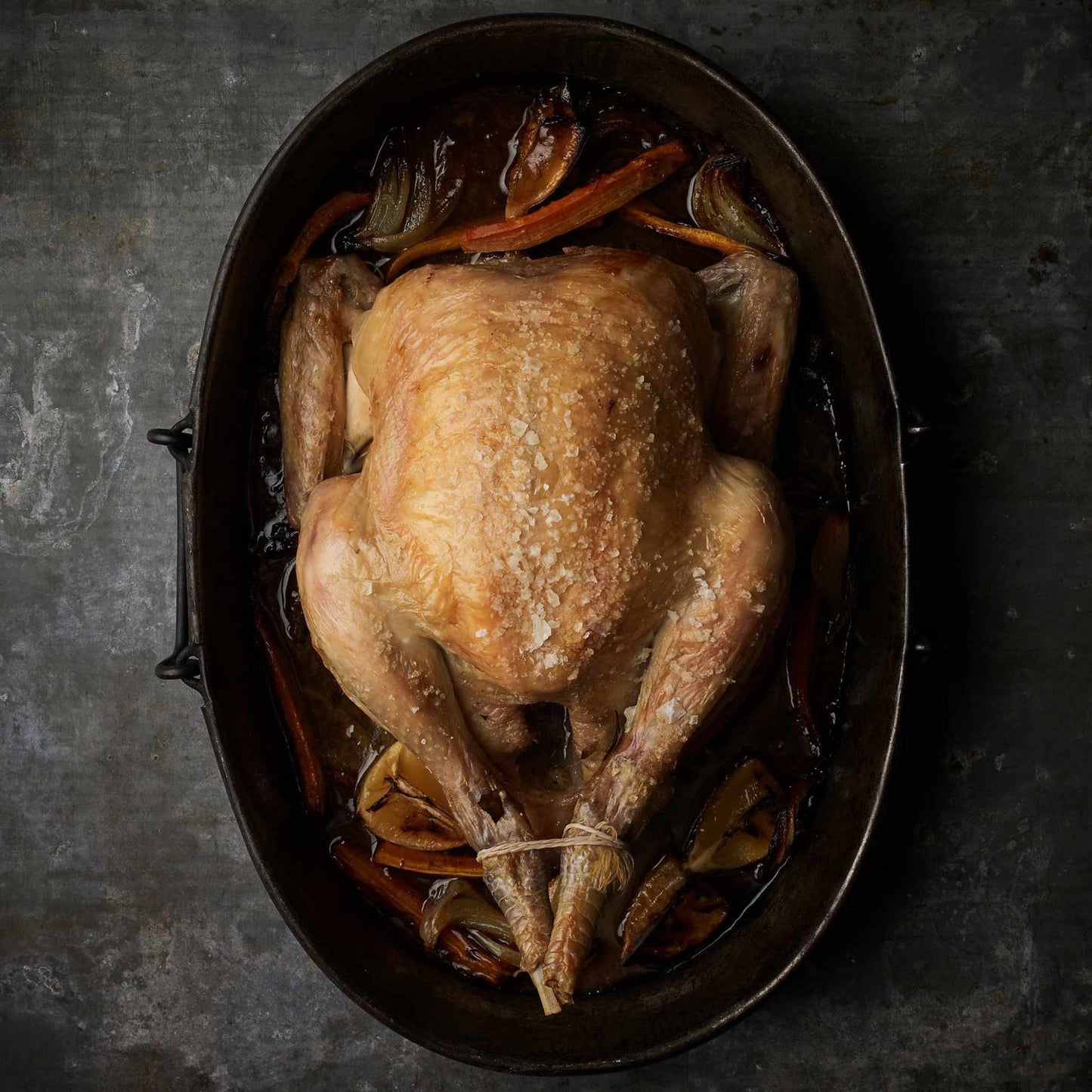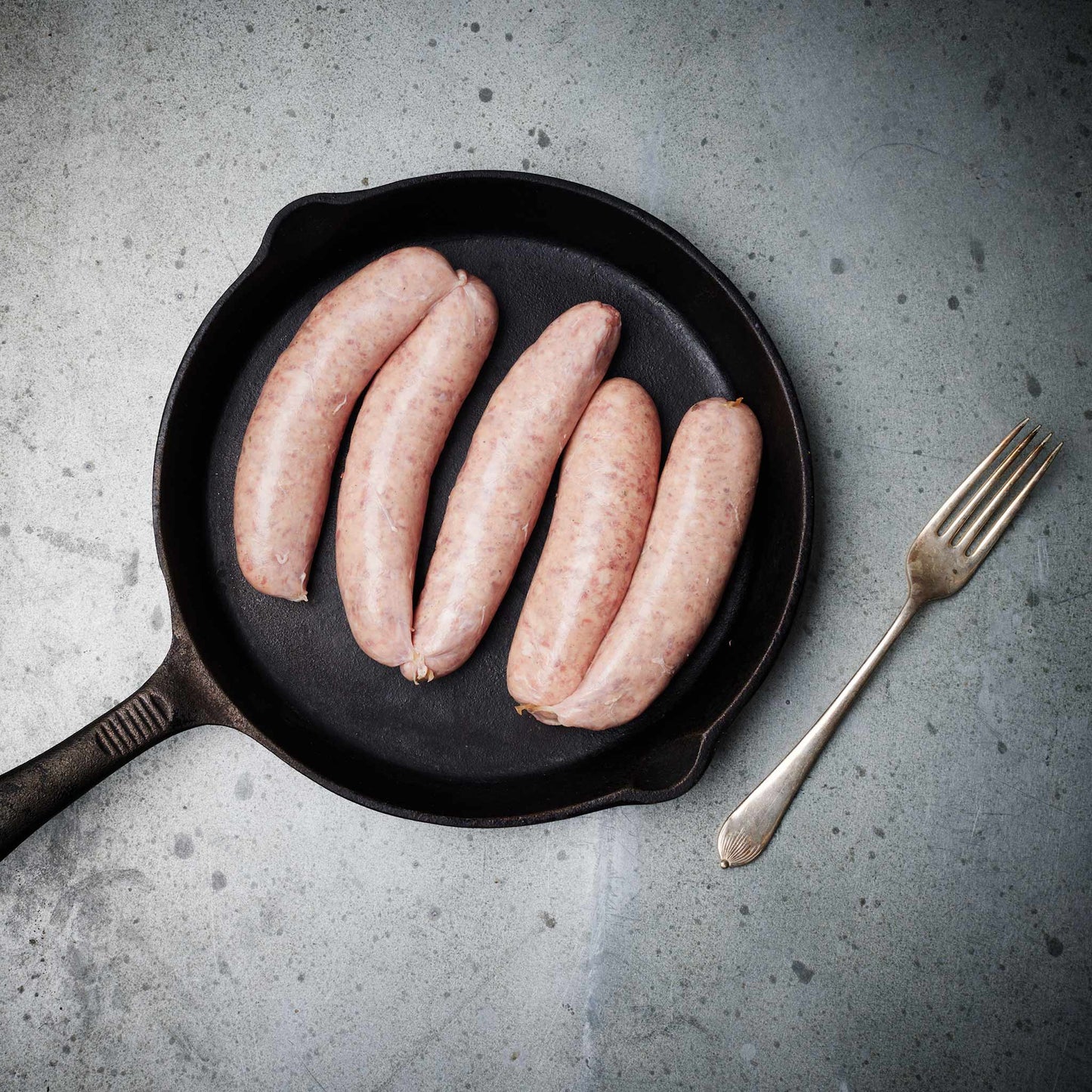We source our chicken from one farm in Leicestershire. The farm is Pasture for Life certified and rears truly free range, outdoor birds.

Serves 6 - With leftovers (maybe!)
Ingredients:
1.8kg Ethical Butcher lamb shoulder - shop HERE
4 Organic cloves of garlic, thinly sliced
8 Anchovy fillets in olive oil - sourced from the Bay of Biscay if possible (find in Spanish supermarkets)
2 Rosemary sprigs, ideally home grown, organic if possible
2 Organic brown onions, thickly sliced
250ml Organic dry white wine - organic if possible
A little olive oil.
Method:
The day before:
Cut incisions in the lamb shoulder about 2 cm deep and at 3 cm intervals
Stuff each incision with a little anchovy, sliced garlic and rosemary
Cover and refrigerate overnight for flavours to develop
Cooking day:
Remove the lamb from the fridge and wait until it reaches room temp - approx 2 hours
Preheat oven to 150c
Spread onion slices into the bottom of a roasting tin
Add 250ml white wine and 500ml water
Place the lamb on top of the liquid and onions, drizzle with a little olive oil and season
Cover with baking paper then seal with foil
Bake for 4-5 hours basting occasionally
Remove from the oven, remove the foil and paper, turn the oven up too 200c and put back in for 20 minutes until browned
Set aside for 20 minutes before serving, the meat should be fork and spoon tender, mix with the onions and juices in the pan when serving
Anchovies with lamb might sound like an unusual pairing but please bear with us, this dish is a classic that packs a serious flavour punch.
Anchovies are a rich source of umami. The word umami derives from a Japanese word meaning “pleasant savoury taste” - it describes foods that are fundamentally savory in nature.
Umami comes from three compounds that are naturally found in plants and meat: glutamate, inosinate, and guanylate. The first, glutamate, is an amino acid found in vegetables and meat. Iosinate is primarily found in meat, and guanylate levels are the highest in plants.
Other foods rich in umami are parmesan cheese, certain mushrooms, cooked tomatoes, soy sauce, some seaweeds and other dried fish that have been used for centuries by cultures all over the planet to bring this intriguing flavour that we crave.
The ancient Greeks and Romans produced a prized sauce called garum which was made from ingredients including the fermented salted intestines of anchovies which was very rich in glutamate and hence umami.
Here in the UK we have our own version of this in most supermarkets called Worcestershire sauce. This staple in our cupboards is a dark brown condiment made from fermented anchovies, vinegar, sugar, and spices. Worcestershire sauce likely evolved from a Malaysian condiment similar to Indonesian kecap manis, a sweet, thick soy sauce.
So this is why we love anchovies in this recipe, but how should we source them?
Anchovies are a resilient species and as such can sustain relatively high levels of fishing pressure, however there are certain marine environments that are more sustainable than others to source from.
The Marine Conservation Society says:
The sustainability of European anchovies varies. Check the label for where they are caught, Bay of Biscay anchovies are the Best Choice! European anchovies caught in Atlantic Iberian waters or Northwest Africa (such as Morocco or Mauritania) are OK, but fishing here is not as well controlled.
Unprocessed anchovies are a relatively mild tasting fish but the anchovies you're probably most familiar with, the ones that come in jars or cans and turn up in pizzas, pastas, sandwiches, have been filleted, salt-cured, and stored in olive oil. It's that curing process that produces the intensely salty flavor and pungent, fishy odor commonly associated with anchovies. It's also what's responsible for breaking down the myosin in the fish—one of the muscle proteins that hold its flesh together—making it exceedingly easy to mash up and dissolve. These are the ones we want for that rich umami decadence that will take this lamb dish to a new level of lip smacking deliciousness.



